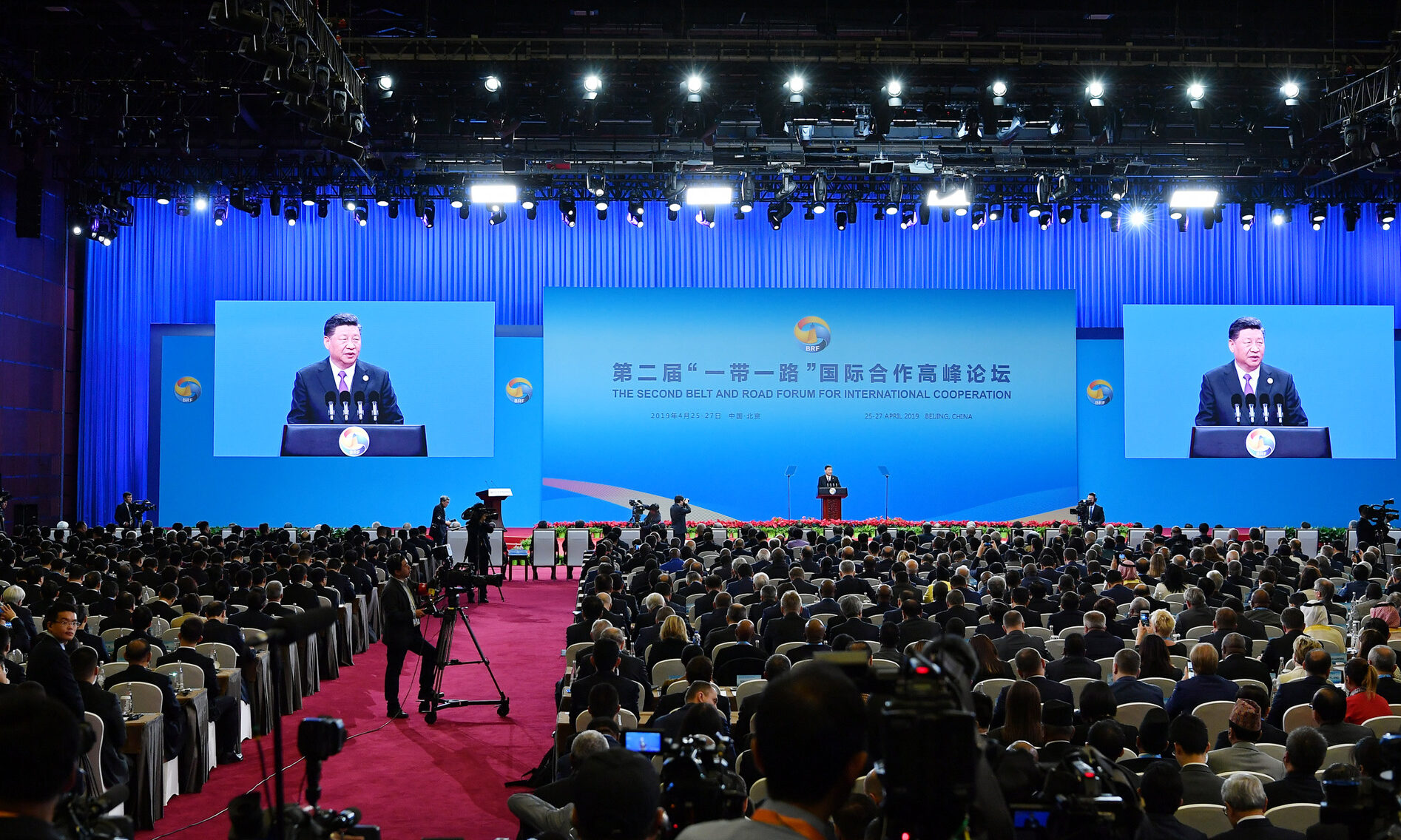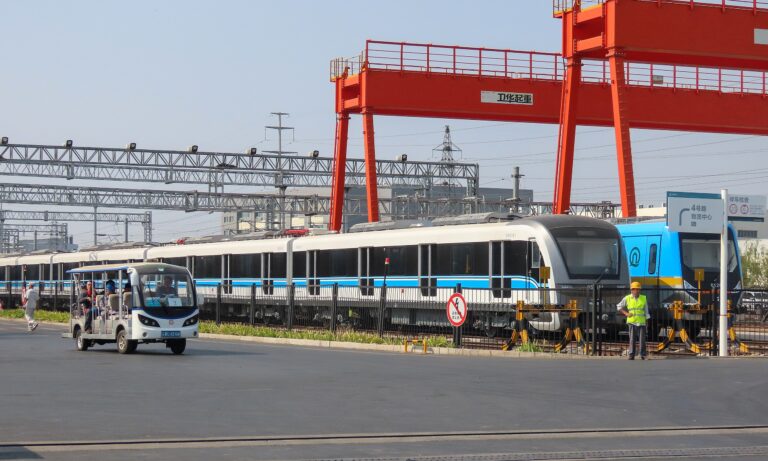
With the Chinese BRI initiative at its tenth anniversary, the scoreboard is not particularly positive for China. While the project gave Beijing an attractive brand to present its overseas engagement and indirectly spurred the interest of other global players in the Global South, direct gains for China have been limited.
Ten years and three fora. This is how long it took for the Belt and Road Initiative (BRI) to experience all the possible emotions and states: from the enthusiasm of the beginnings to setbacks and disappointment. Throughout this decade, the BRI has been known under a plethora of monikers, though remaining, first and foremost, a branding strategy for China’s foreign policy, meant to promote both its image and power abroad.
But beyond that, did the BRI pass the test of time and become China’s empowering tool to promote a new type of global order? Let us look at how these past ten years tell the story of the Chinese initiative.
Silk Road Redux
The history of BRI began to be written in 2013, when Xi Jinping presented, in two speeches in Kazakhstan and Indonesia, two proposals formulated around the mythology of the Silk Road. Even before 2013, many observers and stakeholders, including Chinese leaders, were already talking about the possibility of rebuilding the legendary trading and cultural exchange route. Even the US had its own dream of building a New Silk Road centered on Afghanistan. So, China launched two ideas that focused on the same narrative which would later fuse into the BRI: Silk Road Economic Belt and the 21st Century Maritime Silk Road.
These two concepts were introduced by Xi Jinping during his visits to neighboring countries and were thus born as components of China’s periphery diplomacy. But outside of China, they sparked the imagination of a new Silk Road connecting all of Eurasia and bringing prosperity. While very prompt in repurposing the legacy of the ancient trade route, China was slow in creating a strategy – or even a name – around the newly proposed initiative. What was first called the “One Belt, One Road” was renamed to Belt and Road Initiative in 2015, which is when China finally came out with a vision and guidelines for its new project, conceived as encompassing five major goals: policy coordination, facilities connectivity, unimpeded trade, financial integration, and people-to-people bonds, topics that Xi had already presented in 2013, but without much detail.
Later on, the years 2016 and 2017 were the zenith of the BRI. Spurred by a lot of enthusiasm surrounding the initiative, China promised a myriad of investments in different countries, especially those of Africa. In the meantime, many people-to-people projects were launched or implemented, and the BRI evolved to become a global initiative, welcoming countries even from Latin America and eventually expanding into outer space, through a so-called Space Silk Road. The BRI was the buzzword of the moment. In 2017, Xi Jinping successfully hosted the inaugural Belt and Road Forum in Beijing, where even important European countries like Italy, Spain, Switzerland, and Poland were represented by their prime ministers or presidents.
But dark clouds were looming on the horizon. Without having a clear strategy, China used the initiative as a broad brand and slogan for its foreign investments and foreign policy actions. Often, this was done without careful analysis or planning, and soon the image of the BRI would be stained forever by debt trap accusations.
In 2017, Brahma Chellaney wrote an article about how China is indebting countries through its strategy, focusing on the case of Sri Lanka and the port of Hambantota. This debt trap narrative started to be amplified within the geopolitical context of the Trump administration, the US-China trade war, and related tensions. In the end, the BRI ceased to be perceived in the West and many other capitals as a beneficial, innovative strategy. Instead, it was attacked as a debt trap, an imperialist initiative, and a weapon harnessed by China to gain geopolitical advantages.
Over the years, the BRI’s image became so tarnished that in 2021 Xi Jinping came up with a new proposal presented during a UN speech: the Global Development Initiative (GDI). The new proposal did not fully replace the BRI but created a blank slate that could serve to improve China’s image, especially in developing countries.
Soon after, the GDI received two sister initiatives: the Global Security Initiative (GSI) and the Global Civilization Initiative (GCI). While these initiatives seemed to have been better planned – two years later, at least their names did not go through any change – they have so far failed to live up to the success and popularity of the BRI, lacking the same grand historic narrative.
Still, China is trying hard to not let the BRI brand wither away. Last week, Beijing hosted the third Belt and Road Forum, in an attempt to keep the BRI flame alive. Nonetheless, gone are the days when Western officials headed to Beijing hunting for New Silk Road treasures – most of the participants now are ‘old friends’ of China.
The Good, the Bad, and the Mundane of the BRI
The mega-infrastructure project of $1, $8 or some other trillion was and still is the mantra of many observers when they talk about the BRI. Without doubt, the infrastructure branch was the most visible among the BRI areas of interest. From building railways in South East Asia, to building power plants and water purification facilities in Africa, to connecting China with Europe through old, existing railway routes, all these projects attracted more attention than people-to-people exchanges or trade links.
But the BRI’s success is not really about building railways, power plants and facilities, but about creating a brand that succeeded in creating ripples around the globe. During the recent years, there has been an inflation of initiatives deemed to counter or mimic the BRI. The most recent response to the Chinese initiative is the India-Middle East-Europe Economic Corridor (IMEC) launched in India on the occasion of the 2023 G20 summit, which aims to facilitate infrastructure investments and development in countries along its route. This initiative is technically part of the Partnership for Global Infrastructure and Investment (PGII), which was launched in 2022 as a US proposal under the G7. One year earlier, in 2021, the European Union launched its own global project, called the Global Gateway. Basically, every year for the last three years, a new BRI competitor was launched – as the world was largely focused on the Chinese initiative as an infrastructure strategy or a mega-project.
Unwittingly, the BRI thus succeeded where many others failed: sparking an interest among powerful countries in investing into infrastructure in the Global South. This region became a focal point of the G7 countries because the BRI worried them that China is successful in creating the image of an initiative that helps people and countries develop and wins goodwill for Beijing in the Global South – an aspect that determined other great powers to pay more attention to the developing world and its needs.
Nonetheless, with some exceptions, especially on the African and Asian continents, the BRI failed to deliver the soft power dividend that China was looking for and to increase its global standing. The BRI brand has been tarnished by the debt trap and other accusations, such as environmental or corruption problems, to such extent that the Chinese government has considerably reduced its rhetorical use and gradually replaced it with the Global Development Initiative.
This failure was amplified by China’s emphasis on quantity, instead of quality. The focus was on numbers: an ever-larger number of countries that signed a Memorandum of Understanding (and, thus, joined the BRI), an astronomically-high amount of announced investment and projects proposed under the BRI umbrella – all these contributing to worsening the image of the initiative around the globe, as they created expectations that have not always been met.
The Future of the BRI
The BRI has often been perceived as a geopolitical tool or an imperialistic initiative, but there is little proof it is the case. The Chinese initiative never exceeded the branding strategy concept and it did not even succeed in generating long-term soft power for China’s foreign policy. While China has already started to reduce the use of the BRI brand within its leaders’ speeches, the initiative is here to stay – after all, it has been written in the Communist Party’s constitution. For a communist leadership, accepting mistakes and publicly acknowledging them is not an option. Just as in the case of the ex-16+1 mechanism in Central and Eastern Europe, the BRI will remain too big to abandon.
Written by
Andreea Brinza
AndreebrinAndreea Brînză is a Vice President of The Romanian Institute for the Study of the Asia-Pacific (RISAP). Her research focuses on the geopolitics and geoeconomics of China and especially on the Belt and Road Initiative.


